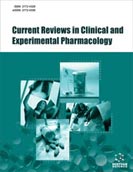Abstract
Background: Continuous innovation is the unique feature of a pharmaceutical industry and is also prerequisite for sustainment of this industry. However, the dipping number of new molecules, rising costs of drug development, heightened health authority scrutiny and increased competition from generic industry indicate that the innovation is endangered.
Methodology: The methodology used is a comparative study on the basis of original empirical research. More specifically, the part of examination facts and regulation has been written by conducting empirical research on current international and national resources concerning the subject from books, various Guidelines, Rules and regulations, Articles, Published Reports and internets.
Results: The importance of innovation has been fairly realized by the industry and regulatory authorities as evident from the rise in number of new molecules approved by US FDA in 2014. To safeguard innovation, Product Lifecycle Management (PLM) should be incorporated in the business models of a pharmaceutical company. It not only helps to maximize lifecycle of the product but also to improve the product development processes, make better business decisions and to deliver greater value to consumers.
Conclusion: A pharmaceutical product’s life is always complex & unique in nature and can be described in five distinct phases- development phase, approval phase, introduction phase, commercialization & quality management phase and decline phase. Number of strategies to be applied at each stage and the strategies are generally coupled with regulations, and the choice of strategy may vary on country to country. In present manuscript, the scope of various PLM strategies for innovators in four different countries namely, USA, EU, Canada and India has been discussed. This may guide the innovators to have competency to uphold the basic necessity for their survival, i.e. innovation.
Keywords: Exclusivity, innovation, product lifecycle management, product lifecycle, strategy.
 39
39 2
2




